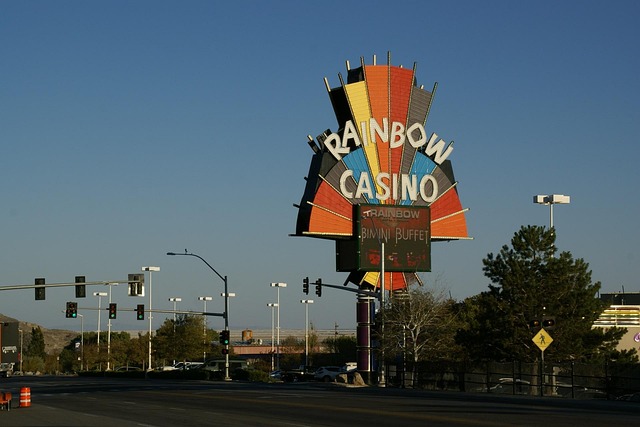Brick and mortar casinos, once exclusive social clubs within grand hotels, evolved into bustling entertainment hubs in the 20th century, offering gaming, dining, and luxury accommodations that attracted diverse backgrounds. However, their global reach is challenged by online gambling's accessibility. The industry adapts by integrating VR/AR, streamlined online systems, data analytics, personalized rewards, and immersive experiences to remain competitive, ensuring brick-and-mortar casinos' continued appeal in a dynamic market despite high costs and regulatory complexities.
In the ever-evolving entertainment landscape, casino resorts stand as a timeless attraction, seamlessly blending gaming, hospitality, and leisure. This article delves into the captivating journey of brick and mortar casinos, exploring their historical roots and enduring appeal. We weigh the advantages and disadvantages of traditional casino resorts, from immersive experiences to limited accessibility. Finally, we peer into the future, examining how the digital age and shifting customer expectations are reshaping this iconic industry.
- The Evolution of Brick and Mortar Casinos: A Historical Perspective
- Advantages and Disadvantages of Traditional Casino Resorts
- Future Trends in the Industry: Adapting to Digital Age and Customer Expectations
The Evolution of Brick and Mortar Casinos: A Historical Perspective

The history of brick-and-mortar casinos stretches back centuries, reflecting a fascinating evolution in entertainment and gambling culture. In their earliest forms, casinos emerged as social gathering places within grand hotels, offering card games and dice rolling to wealthy nobles. These early establishments set the stage for what would become a global phenomenon, with each era adding its unique twist.
Over time, casinos evolved from exclusive clubs to more accessible entertainment hubs. The 20th century saw a boom in land-based casino resorts, particularly in resort destinations, where luxurious accommodations and entertainment options merged to create vibrant, bustling environments. This period marked a significant shift, transforming casinos into multi-faceted leisure destinations that rivaled the allure of the world’s great cities, captivating folks from all walks of life.
Advantages and Disadvantages of Traditional Casino Resorts

Traditional casino resorts, often referred to as brick and mortar casinos, offer a unique blend of advantages and disadvantages in the competitive world of gambling entertainment. One of their key strengths lies in providing an immersive experience that cannot be fully replicated online. These resorts create an atmosphere that attracts visitors from around the globe; the combination of games, dining options, and luxurious accommodations makes them popular destinations for both casual gamers and high rollers.
However, the physical nature of these casinos also presents certain drawbacks. Overhead costs for maintaining a large facility can be substantial, impacting profit margins. Moreover, accessibility is a factor; not everyone can easily travel to these locations, limiting their customer base compared to online gambling platforms that reach a global audience. Regulations and licensing requirements further complicate matters, ensuring only licensed operators can offer gambling services, which may restrict competition and innovation in the market.
Future Trends in the Industry: Adapting to Digital Age and Customer Expectations

The casino resort industry is undergoing a significant transformation as it adapts to the digital age, reshaping traditional brick-and-mortar establishments. With evolving customer expectations and the rise of online gambling, resorts are integrating cutting-edge technology to enhance their offerings. Virtual reality (VR) and augmented reality (AR) are being leveraged to create immersive gaming experiences, allowing guests to enjoy a mix of physical and digital entertainment.
Online booking systems and mobile apps have already become standard, offering guests convenience and personalized access to casino services. Moreover, the industry is embracing data analytics to cater to individual preferences, from customized marketing campaigns to tailored rewards programs. These innovations ensure that casino resorts remain competitive and appealing in a rapidly changing market.
Brick and mortar casinos have long been a staple of the entertainment industry, evolving significantly over time. However, as we navigate the digital age, the future of traditional casino resorts lies in their ability to adapt. Balancing the advantages of physical spaces with the emerging trends in online gaming will be key. By embracing technology while preserving the social ambiance, casino operators can ensure their relevance and cater to evolving customer expectations, solidifying their place in both the real and virtual worlds.






